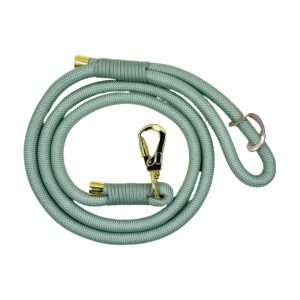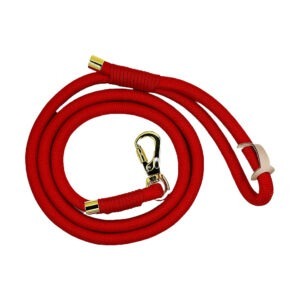The Pekingese, often referred to as the Lion Dog, is a breed steeped in history, mythology, and legend. Originating from China over 2000 years ago, these dogs were highly esteemed by Chinese emperors and were often depicted in Chinese art. With their distinctive appearance, unique personality, and rich history, Pekingese have captured the hearts of dog lovers worldwide.
Like all breeds, Pekingese have unique dietary and exercise needs that owners must consider to ensure their health and longevity. Their small size might be misleading, as these dogs have a hearty appetite and require balanced nutrition to support their overall health. Coupled with the right exercise routine, a nutritious diet can keep a Pekingese healthy and happy.
In the following sections, we delve into the specifics of what comprises a healthy diet and suitable exercise regimen for a Pekingese. We will also discuss how these can be adjusted based on the dog’s age, overall health, and specific characteristics of the breed. We aim to equip Pekingese owners with the knowledge to make the best choices for their beloved pets. Let’s start with understanding more about the Pekingese breed in the next section.
Some of our latest products...
Understanding the Pekingese Breed
The Pekingese, or “Peke,” is a breed that is both compact and robust, characterized by its broad, flat face, and a body low to the ground, giving it an almost regal bearing. The Pekingese’s coat is long, lush, and double-layered, further adding to its distinctive appearance. Despite its small stature, typically weighing around 7 to 14 pounds, the Pekingese is known for its brave, tenacious, and dignified demeanor.
This breed possesses an independent and sometimes stubborn temperament. They are intelligent and can be aloof with strangers but tend to form deep bonds with their human companions, often proving to be loyal and affectionate pets. That being said, their independent streak means that they like to explore their surroundings at their own pace and in their own time.
Despite their bold character, Pekingese are primarily indoor dogs and can adapt well to apartment living. They are less active compared to other breeds, but they still enjoy short walks and play sessions. One should bear in mind their brachycephalic (flat-faced) nature, making them sensitive to high temperatures and strenuous exercise.
A significant characteristic of the Pekingese is its long lifespan, with many living well into their teen years. This longevity emphasizes the need for a good understanding of the breed’s dietary and exercise requirements throughout the various stages of its life.
In the following sections, we will delve deeper into these aspects, providing you with a comprehensive guide on how to ensure your Pekingese receives the best care possible when it comes to diet and exercise.
Dietary Needs of a Pekingese
The dietary requirements of a Pekingese are influenced by several factors including age, size, metabolism, and health status. As a general rule, they require a balanced diet, rich in high-quality protein to support muscle health, fats for energy and skin health, and complex carbohydrates for sustained energy.
Puppies, adults, and senior Pekingese all have unique dietary needs. Pekingese puppies grow rapidly, therefore they require a diet high in protein and calories to support their development. The diet should be divided into several small meals throughout the day to avoid overstretching their tiny stomachs.
Adult Pekingese, on the other hand, have slower metabolism. The caloric intake should be carefully regulated to prevent weight gain. Overweight Pekingese can suffer from various health problems, including heart disease and joint issues. The diet should also be high in protein to maintain muscle mass and should include fruits and vegetables for fiber and vitamins.
Senior Pekingese need a diet that’s easy to chew and digest, but still nutritionally dense. They may benefit from food with supplements like glucosamine and chondroitin for joint health and omega fatty acids for cognitive function and skin health.
Pekingese are known to be picky eaters. It’s important to encourage good eating habits from a young age. However, remember not to force or rush them during meal times as this could lead to stress and even worsen their picky eating habits.
Lastly, it’s important to have fresh water available for your Pekingese at all times. Dehydration can lead to serious health issues, especially in the hotter months.
In the next section, we will delve deeper into the best ways to select the right food for your Pekingese and how to deal with common feeding issues.
Exercise Needs of a Pekingese
As is typical with toy breeds, the Pekingese doesn’t require rigorous exercise to stay healthy and happy. However, this doesn’t mean that they should live a sedentary lifestyle. Regular, gentle exercise is crucial for their overall health, keeping their joints limber, their weight in check, and their minds stimulated.
Walking is an ideal form of exercise for Pekingese. One or two short walks per day, along with a bit of playtime, is generally enough for this breed. Keep in mind that they can be susceptible to heat, so it’s better to schedule walks in the cooler parts of the day, like early morning or late evening.
Pekingese also enjoy playing games both indoors and outdoors. Interactive toys can provide mental stimulation and light physical activity. Be sure to engage in gentle play that doesn’t put too much strain on their compact bodies.
When it comes to exercise, it’s important to watch for signs of exhaustion in your Pekingese. This breed is brachycephalic, meaning they have a shortened skull shape that can lead to respiratory issues. If your Pekingese starts to pant heavily or struggle to breathe, it’s time to let them rest.
Age is another important factor when considering exercise routines. Pekingese puppies are full of energy and may enjoy more playtime, while seniors might find too much activity tiring. Always adjust the exercise routine to suit your Pekingese’s individual needs.
Keep in mind that while the Pekingese may not need much physical activity, they still crave attention and companionship. Spend time each day engaging with your pet to keep them happy and content.
The next section will focus on the common health issues in Pekingese and how diet and exercise can play a crucial role in managing these issues.
Common Health Issues in Pekingese
Like all breeds, Pekingese have certain health issues that they are more susceptible to. Being aware of these potential problems can help owners provide the best care for their pets and potentially extend their lifespan.
One of the most significant health concerns in Pekingese is Brachycephalic Syndrome. This is a condition common in flat-faced breeds, caused by the breed’s characteristic physical structure. Symptoms can include difficulty breathing, noisy breathing, and frequent panting. Regular, gentle exercise and avoiding extreme temperatures can help manage this condition. Additionally, maintaining a healthy weight is crucial, as obesity can exacerbate breathing problems.
Pekingese are also known to have issues with their eyes, due to their prominent nature. Conditions such as dry eye, corneal ulcers, and progressive retinal atrophy (PRA) are common. Feeding a diet rich in omega-3 fatty acids can help support eye health.
The breed is also prone to orthopedic issues, such as Intervertebral Disc Disease (IVDD) and Patellar Luxation. Regular low-impact exercise, like walking and swimming, along with a diet rich in high-quality proteins and omega-3 fatty acids, can help support joint health.
Maintaining a healthy weight is another important aspect of a Pekingese’s overall health. Obesity can increase the risk of many of these conditions, especially orthopedic problems. Regular exercise and a controlled diet can help keep your Pekingese’s weight within the healthy range.
Finally, Pekingese have a thick double coat that is prone to matting and skin infections. Regular grooming, along with a diet rich in omega-6 and omega-3 fatty acids, can help support skin and coat health.
As always, regular vet check-ups and preventive care are crucial for early detection and management of any potential health problems. In the next section, we will discuss how to maintain a healthy weight for your Pekingese through diet and exercise.
Maintaining a Healthy Weight for Your Pekingese
Just like humans, maintaining a healthy weight is essential for your Pekingese’s overall well-being. Carrying extra weight puts unnecessary stress on their small frame, exacerbating existing conditions such as Brachycephalic Syndrome and orthopedic issues, and potentially leading to other health problems like heart disease and diabetes.
The diet of your Pekingese plays a pivotal role in weight management. High-quality commercial dog foods will provide balanced nutrition, but portion control is crucial. It can be tempting to indulge your dog’s pleading eyes, but overfeeding can lead to weight gain and obesity. Your vet can provide guidance on the right portion size based on your Pekingese’s age, weight, and activity level.
Treats can be a great tool for training and bonding, but they should be used sparingly. Choose healthy, low-calorie options and remember to account for treats when calculating your dog’s total daily calorie intake.
Exercise is the other half of the weight management equation. While Pekingese aren’t the most active breed, they still require regular physical activity to keep fit and healthy. A daily walk or two, combined with playtime at home, can help burn off calories and prevent weight gain. Remember, due to their Brachycephalic Syndrome, strenuous exercise and hot weather should be avoided.
Routine weight checks are a useful way to keep track of your Pekingese’s weight. Small changes in weight can be hard to notice, so regular weigh-ins can help catch any gains or losses early. If you notice any sudden or unexplained changes in your dog’s weight, consult with your vet as soon as possible, as this could indicate an underlying health issue.
In conclusion, a balanced diet and regular exercise are essential for keeping your Pekingese at a healthy weight, reducing the risk of health issues, and ensuring a high quality of life. Up next, we’ll discuss the grooming needs of your Pekingese, and how diet can impact their skin and coat health.
Grooming Needs of a Pekingese
The Pekingese breed is known for its luxurious, long double coat that gives it a lion-like appearance, a feature that adds to their royal charm. However, this unique coat also requires consistent grooming to keep it in the best condition.
One of the most important aspects of grooming for Pekingese is regular brushing. This breed’s long, thick coat can mat and tangle easily, so it’s essential to brush it daily to prevent this. Using a slicker brush and comb, you should start at the head and work your way down, paying extra attention to areas where matting commonly occurs, like under the legs and around the ears.
Bathing your Pekingese should be done every three to six weeks depending on their lifestyle. Use a high-quality dog shampoo to cleanse the coat and follow up with a conditioner to add extra moisture and shine. Ensure the shampoo and conditioner are thoroughly rinsed to avoid any skin irritation.
Apart from coat care, other aspects of grooming include regular teeth cleaning to prevent dental disease, nail trimming to keep the paws healthy, and checking and cleaning the eyes and ears as Pekingese can be prone to infections in these areas.
Notably, diet plays a significant role in the condition of a Pekingese’s coat. A high-quality diet rich in proteins, Omega-3 and Omega-6 fatty acids will promote a shiny and healthy coat, and will also support overall skin health. If you notice any skin or coat issues like excessive shedding, dull coat, or skin irritation, it may be a sign that dietary adjustments are needed. Consult with your vet to find the best diet that caters to your Pekingese’s nutritional needs.
Remember, grooming isn’t just about maintaining your Pekingese’s appearance – it’s a crucial part of their overall health and well-being. Regular grooming sessions will help you spot any potential health issues early, and provides a great opportunity for bonding with your pet.
Next, we’ll conclude by summarizing the key points about the Pekingese’s diet and exercise needs.
Conclusion
Caring for a Pekingese is a unique and rewarding experience. This breed, with its regal past and distinct personality, is full of charm and brings joy and companionship to many households. To maintain their health and happiness, it’s essential to provide them with a balanced diet and the right amount of exercise, tailored to their specific needs.
It’s clear from our discussion that a Pekingese’s diet plays a fundamental role in their overall health. It’s essential to choose high-quality dog food, packed with the right nutrients like protein, fats, and carbohydrates, and cater to their dietary needs as they transition through different life stages. Also, it’s crucial to monitor their food intake to avoid overfeeding, which can lead to obesity and its associated health risks.
In terms of exercise, Pekingese, while not the most active breed, still need daily physical activity to maintain their health and prevent obesity. This can come in the form of short walks, playtime, or indoor activities. Keep in mind that this breed is prone to overheating, so always ensure exercise is carried out in a cool environment and not during the peak heat of the day.
Understanding and addressing the grooming needs of a Pekingese is also a key part of their care. Regular grooming not only keeps them looking their best, but also contributes to their overall health, and can be an excellent bonding experience for you and your pet.
As a pet parent, it’s your responsibility to tailor these diet, exercise, and grooming guidelines to your Pekingese’s individual needs, taking into consideration factors such as their age, weight, and health status. Remember, every Pekingese is unique, and what works best for one may not necessarily work for another. When in doubt, always consult with a veterinarian or a pet nutrition expert.
In the next section, we’ll provide the references used in this article. After that, we’ll answer some frequently asked questions about the diet and exercise needs of Pekingese.
Frequently Asked Questions
How often should I feed my Pekingese?
Pekingese puppies should be fed three to four times a day until they are six months old, then twice a day throughout their adulthood. As they age and become seniors, their feeding schedule may need to be adjusted based on their health and activity level. It’s always best to consult with your vet for the most accurate advice.
Can I give my Pekingese a vegetarian diet?
While some dogs can live on a carefully planned vegetarian diet, it is challenging to ensure they get all the necessary nutrients, especially protein. It’s advisable to consult with a vet or a canine nutritionist before making any significant changes to your Pekingese’s diet.
My Pekingese doesn’t seem to enjoy walks as much as other dogs. Is that normal?
Yes, it’s quite normal. Pekingese dogs are not as active as some other breeds. Short walks combined with playtime at home can be enough for them. However, they should still have daily exercise to maintain their health and prevent obesity.
My Pekingese is gaining weight rapidly. What should I do?
Rapid weight gain can be a sign of overfeeding or lack of exercise, but it can also indicate a health problem. It’s crucial to consult with a vet who can assess your Pekingese’s condition and recommend a suitable diet and exercise plan.
How can I tell if my Pekingese is overweight?
An overweight Pekingese may show signs like difficulty walking, shortness of breath, and reduced activity level. You should also be able to feel your dog’s ribs without pressing hard. If you’re unsure, a vet can give you a definitive answer and provide advice on weight management.





